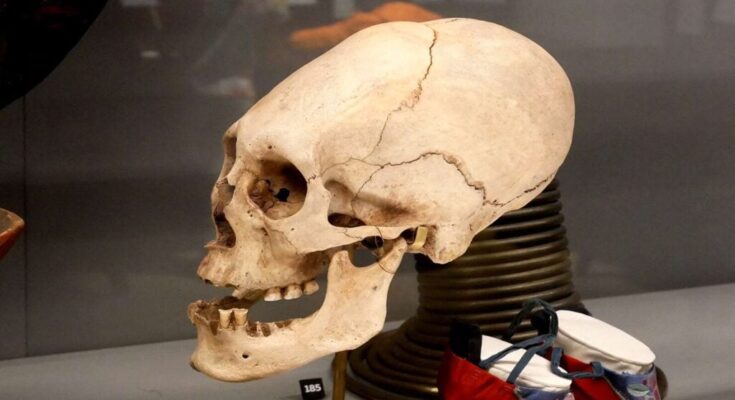
Researchers in Peru uncovered five sets of human remains, and two of them have unusually elongated skulls. Given that such skulls have not previously been unearthed in the area, this was a novel discovery. Local stories mention a group of people, called the “Gentiles,” who were said to be larger than the native population.
In many ancient cultures, people intentionally reshaped the heads of babies to create flattened or elongated skulls. This practice was often linked to high-ranking or elite groups. Similar skull shapes have been found in Australia, the Middle East, Europe, Russia, and the Americas.
Some modern tribes in Africa and Oceania have also practiced skull modification. Despite their varying shapes, these skulls share common features with normal human skulls, including three cranial plates and a brain size of about 1200 to 1400 cc.
In 1928, Peruvian archaeologist Julio Tello made a remarkable discovery in a cemetery in Paracas, Peru. He discovered elongated and unusually large skulls. These skulls were much larger than is typically the case for modern humans.
Mummified baby elongated skull
Paracas is a desert area located in Pisco Province on Peru’s southern coast. The skulls found there are believed to be between 800 and 2,800 years old. One striking find in 2015 was the skull of a mummified baby, which had an unusually large cranium.
Experts believe this might be a naturally elongated skull, as the process of artificially shaping a skull usually takes at least six months.
One of hundreds of elongated skulls that were discovered in 1928 at Paracas Peninsula in Peru.
Cranial deformation was practiced by Paracas civilization (800-100 BC) by tightly wrapping head in cloth, during first few years of life, in order to elongate cranium.
Larco Museum,… pic.twitter.com/3wPgJTf5ah
— Archaeo – Histories (@archeohistories) July 23, 2023
However, the elongated skulls discovered by Philip J.S. Jones, the author of A Peruvian Diary, and local residents in Nazca are smaller compared to the Paracas skulls.
It is not yet clear whether their unusual shape is due to artificial cranial deformation (ACD) or a genetic cause. The key point is that these skulls were found in a region with no such similar previous discoveries.
Possible find of Paracas skulls subspecies
In 2008, Philip visited South America. His skills led him to build a dormitory in a mountain village, a place he returned to for years.
In 2018, during one of his visits, a local friend shared the folk tale “Los Tres Foresteros: The Lost Legend of the Chancas” about a lost race known as the Gentiles. They were said to have been taller than the local tribe and banished underground by the gods.
After watching a documentary on the Paracas skulls, Philip learned of similar skulls in nearby caves. With a small group, he set off on a challenging hike but found only human remains without skulls.
Two weeks later, a 15-year-old named Wilder discovered the sought-after elongated skulls in a forgotten tomb.



